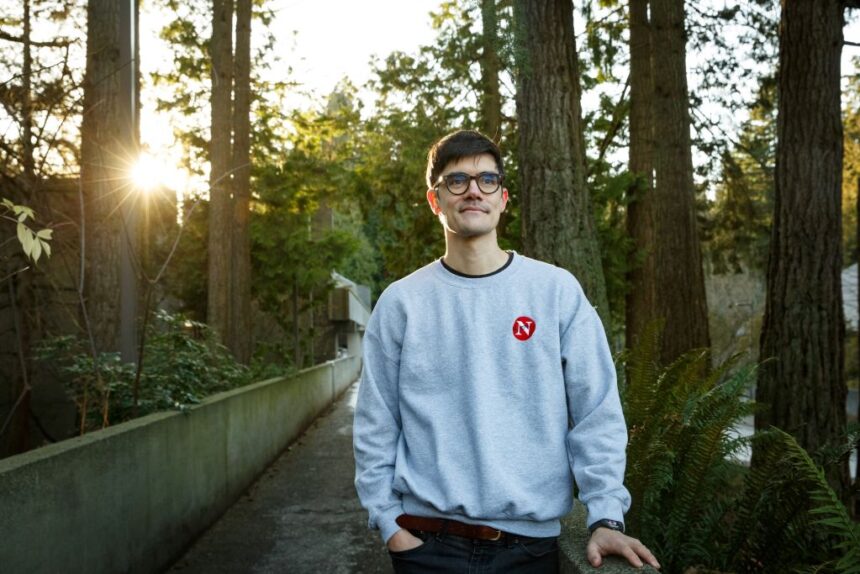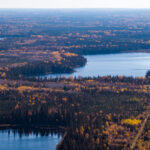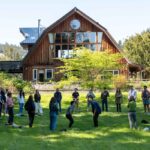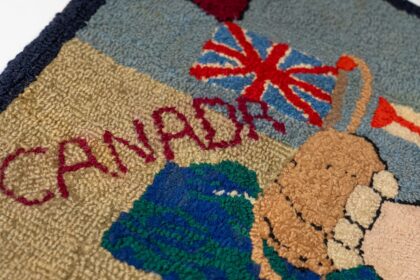It’s probably no secret that we care a lot about making our visual journalism shine at The Narwhal. When someone lands on one of our stories, we want them to really soak in the experience — and keep coming back for more. But how could we take our website experience to the next level? Well, the more we thought about it, the more the answer became clear: we needed an in-house web developer. And not just anyone: we needed someone capable of sitting at the crossroads of journalism and code who could make our best-in-class digital experience shine. Lucky for us, we found the perfect match. Andrew Munroe has joined our team as our very first staff web developer! He comes to The Narwhal with a long track record of working on some pretty interesting stuff, from his time at the Global Reporting Centre to projects for organizations like The Tyee, Disability Alliance BC and the Stanley Park Ecology Society. Andrew’s already been busy making a million things happen at The Narwhal, from helping us transition to a speedier site to designing some pretty cool new features we’re excited to share with you very soon (he whipped up this interactive federal party platforms explainer in no time). It’s only been a few months and I think I can speak for our whole pod when I say: how did we get by without him? Read on for Andrew’s thoughts on the secret to a good website — “a good platform gets out of the way” — and a book recommendation for new fathers (did I mention he’s been doing all this work with a newborn at home?). “I moved to Vancouver to pursue my passion for paying a lot of money for housing,” Andrew jokes. (And also put out incredible work with the Global Reporting Centre, among others.) Photo: Isabella Falsetti / The Narwhal Tell us a little bit about yourself! What led you into web development work? I was born in the Toronto suburbs but grew up mostly in Kelowna. After school I moved to Vancouver to pursue my passion for paying a lot of money for housing. My first job after university was managing tech-related projects at an environmental education non-profit. But then I started to gradually get into the actual design and development side of things, both by teaching myself and by learning from some very smart colleagues. I started doing freelance work in a bunch of different fields, from writing and editing to design and development. I got to work on some interactive museum exhibits, content management system overhauls and interactive journalistic pieces. How did that translate into journalism? From that freelance work I got a job at the Global Reporting Centre, where I still work part-time as the digital producer. We do long-form global journalism in collaboration with media partners, as well as journalism education and research, and it’s based at the University of British Columbia. What’s a project you’ve worked on that you’re particularly proud of, and why?! One Global Reporting Centre project I remember fondly is called How to Conceal Your Money Offshore (spoiler: don’t do this). I took creative lead on that project, and designed and developed the website. It consisted of a feature story co-published by Mother Jones and a four-part podcast. The tone of it was something I connected with, and it was fun to work with such a great team. One thing that brought Andrew joy recently? Seeing the crowd respond to his cover band’s performance of My Chemical Romance’s Welcome to the Black Parade. Photo: Isabella Falsetti / The Narwhal What do you think good journalism platforms look like? Who’s doing good work on that front in your opinion? A good platform gets out of the way. It’s one that people don’t think about too much while they’re using it. It’s intuitive and simple for people on the producing side, and makes your content enjoyable and accessible for the people engaging it. But it’s easier said than done. There are so many moving parts and different technologies that all need to work together. I think the Guardian and the New York Times do great work on integrating all aspects of their platforms. They also publish stuff about their tech stack and contribute a lot to open-source projects, which I always enjoy learning about. How do you want to bring that to The Narwhal? I want to start by finding out what’s working well for people with the current setup — and what’s working less well. From there we can think through how we might improve things. Fortunately for me, in my first couple months here my fellow Narwhals (is that what we call ourselves?) have been very helpful and enthusiastic about sharing their visions. What was the last book you read that you loved? Most recently I re-read The World According to Garp because I remember John Irving saying he supposed the book was about a father’s fears — and I was soon to be a father myself. So I thought reading it would ease those fears. So far, it has not. But it was still a good and very funny book. What’s something about you that people would be surprised to learn? Despite my advancing age, I only recently performed live music for the first time. I played passable guitar in an emo cover band and was happy to see a fair few younger people lose their minds when our piano player hit that opening note of My Chemical Romance’s Welcome to the Black Parade. Recent Posts The Narwhal’s in-depth environmental reporting earns 11 national award nominations From disappearing ice roads to reappearing buffalo, our stories explained the wonder and challenges of… Meet Andrew Munroe, The Narwhal’s web developer Sitting at the crossroads of journalism and code, we’ve found our perfect match: someone who… Ontario’s Bill 5 sparks new concerns where a legacy of environmental damage remains The Protecting Ontario by Unleashing Our Economy Act exempts industry from provincial regulations — putting…
Meet Andrew Munroe, The Narwhals web developer












